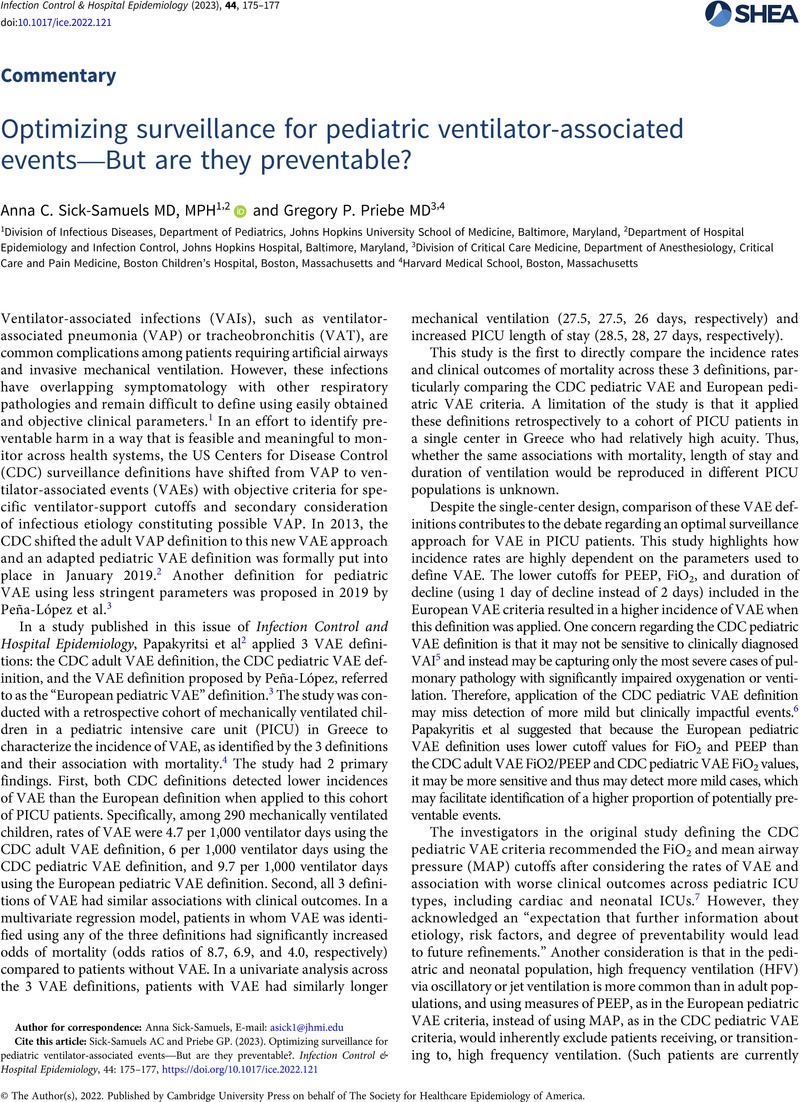Crossref Citations
This article has been cited by the following publications. This list is generated based on data provided by Crossref.
Wu, Andrew G.
Madhavan, Gowri
Deakins, Kathy
Evans, Dana
Hayward, Angela
Pugh, Caitlin
Stutts, Angela Carter
Mustin, Laurie
Staubach, Katherine C.
Sisson, Patricia
Coffey, Maitreya
Lyren, Anne
Lee, Grace M.
Gupta, Sameer
Pereira-Argenziano, Lucy
Priebe, Gregory P.
Bullock, Kevin J.
Grassmyer, Lori
Lowrie, Lia
Mack, Elizabeth H.
Schlafly, Stacey Morgan
Seitz, Bonnie
Stecks, Ryan
and
White, Laurel
2023.
Pediatric Ventilator-Associated Events Before and After a Multicenter Quality Improvement Initiative.
JAMA Network Open,
Vol. 6,
Issue. 12,
p.
e2346545.
Peña-López, Yolanda
Slocker-Barrio, María
de-Carlos-Vicente, Juan-Carlos
Serrano-Megías, Marta
Jordán-García, Iolanda
Rello, Jordi
Abril-Molina, A.
Alejandre, C.
D., Arjona
Bustinza, A.
Campins-Martí, M.
Coca-Pérez, A.
De Carlos, JC.
Flores-González, JC.
García-Besteiro, M.
Jordán-García, I.
López-Castilla, JD.
Martínez-Padilla, MC.
Mendizabal, M.
Ortiz-Álvarez, A.
Peña-López, Y.
Pérez, E.
Pérez, R.
Pujol, M.
Roca, D.
Sánchez-Granados, JM.
Sánchez-Pérez, S.
Schüffelmann, C.
Serrano-Megías, M.
Slöcker-Barrio, M.
Tejada, S.
and
Rello, J.
2024.
Outcomes associated with ventilator-associated events (VAE), respiratory infections (VARI), pneumonia (VAP) and tracheobronchitis (VAT) in ventilated pediatric ICU patients: A multicentre prospective cohort study.
Intensive and Critical Care Nursing,
Vol. 83,
Issue. ,
p.
103664.




